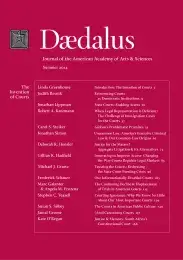Justice & Memory: South Africa’s Constitutional Court
In a society such as South Africa in which the past has been deeply unjust, and in which the law and judges have been central to that injustice, establishing a shared conception of justice is particularly hard. There are four important strands of history and memory that affect the conception of justice in democratic, post-apartheid South Africa. Two of these, the role of law in the implementation of apartheid, and the grant of amnesty to perpetrators of gross human rights violations, are strands of memory that tend to undermine the establishment of a shared expectation of justice through law. Two others, the deeprooted cultural practice of justice in traditional southern African communities, and the use of law in the struggle against apartheid, support an expectation of justice in our new order. Lawyers and judges striving to establish a just new order must be mindful of these strands of memory that speak to the relationship between law and justice.
The new Constitutional Court building is built on a hill in Johannesburg.1 It stands on the site of four notorious prisons. The first and oldest is the Fort, originally built, as its name suggests, as a fort by President Paul Kruger in the years immediately before the Anglo-Boer War, or what in Afrikaans is called the Second Freedom War, to defend the city of Johannesburg. Not long after the war, as is the way with many forts, it became a prison. Mahatma Gandhi and then, some decades later, Nelson Rolihlahla Mandela were both imprisoned there. Around the Fort, three other prisons sprang up: the women’s jail to the west, and to the north, the native jail and the awaiting trial prison. Three of the four prisons still stand on the hill: brick-and-mortar memorials of the role that law has played in South Africa’s history.
The fourth, the awaiting trial block, was demolished to make way for the new court building. Its bricks, however, were preserved, and have been used throughout the court building, most notably in the courtroom itself, where packed into a dry stone curving wall they serve as a reminder both of the prison . . .
